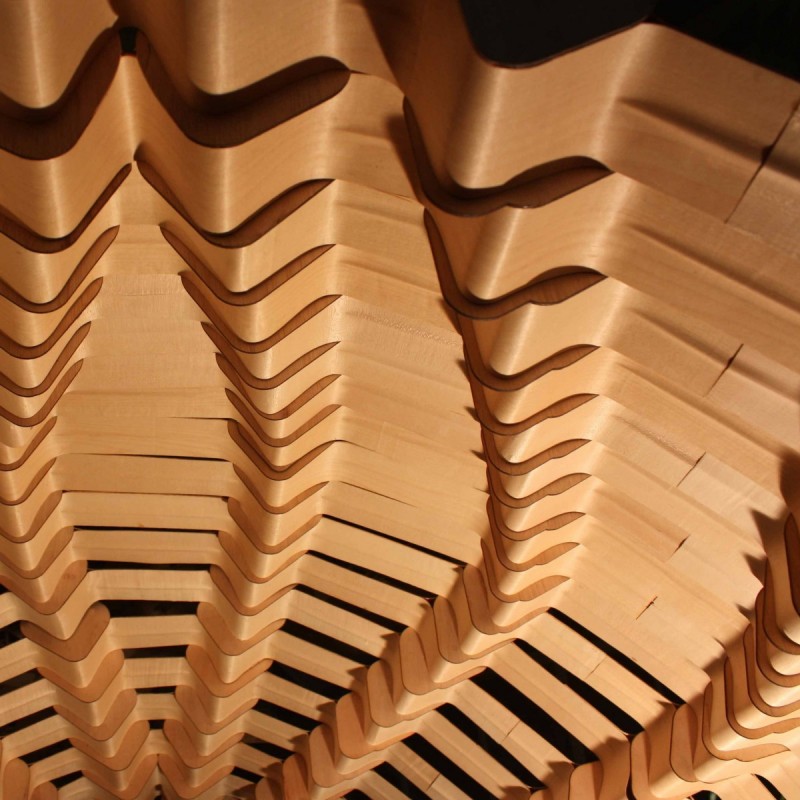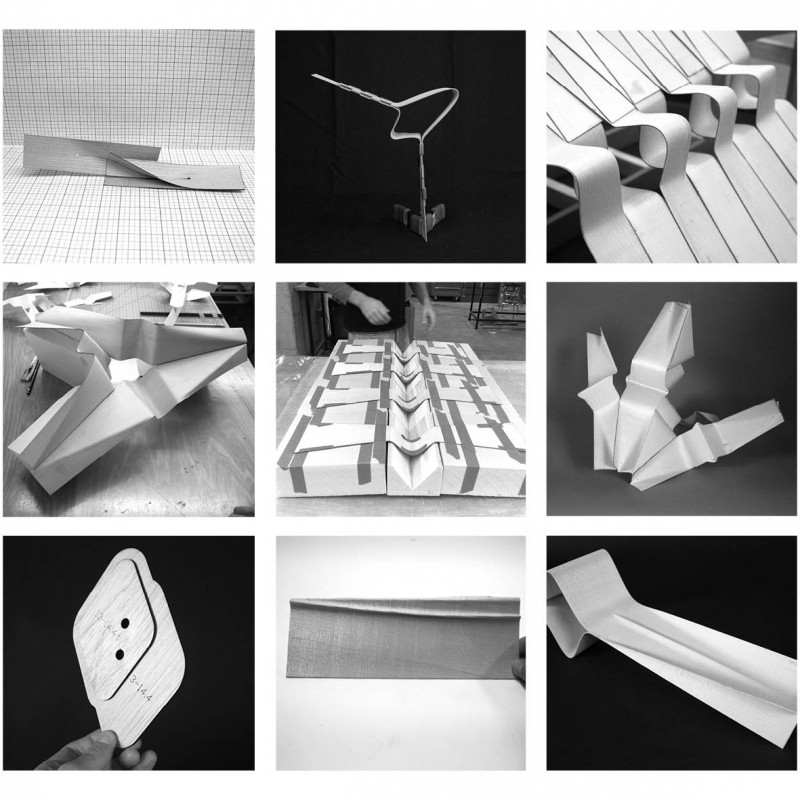Aggregated Lamination
One of wood’s defining characteristics is its anisotropy resulting from its fibrous structure. Many manufacturing methods and engineering processes in wood lamination have tried to overcome this inherent natural quality, attempting to create a more homogeneous, isotropic composite. This research project aims at investigating whether there can exist an in-between state of operation that takes advantage of both anisotropic natural qualities as well as isotropic lamination techniques, where a hierarchical organization of localized, heterogenous laminated constructs coupled with the global arrangement precalculated assembly system can create an engineered three-dimensional matrix of lamination whose reaction is as predictable as a manufactured composite but whose performance is as particular as that of natural wood.
By introducing specific weaknesses into a 2-ply maple laminate, one is able to control its deformation when force is applied. When two different laminates with specific weaknesses are bonded together through clamp molding, a “notch” with precise local geometry is created. This resultant notch has specific angular directionality that is related to its two 2-ply maple laminate components. Therefore, the global geometry is informed by the accumulation of local angles.
The final prototype takes advantage of the grain direction, which runs parallel to gravitational forces, along with an even distribution of notches. Arranging the notches along curved paths prevents global buckling by distributing the weaknesses. The related fabrication process utilizes both the vacuum and clamp molding. The molds are constructed so that variation between the notches is minimized. This precision allowed to accurately predict the resultant angles and to properly size and locate each plate.
The developed system incorporates a number of morphological features that allow for assembly and stiffness: [i] The channel that runs along the flat area of each laminate stiffens this section so that the geometric control of each unit occurs only in the notch. [ii] The “feet,” the section of each unit that meets the ground, is molded with additional curvature to increase the stiffness of this area. In addition, varying the depth and length of the feet adds structural depth to this area. [iii] The plates made from 1/8” plywood prevents local sheering, distributes the compressive forces along the edge of each notch, and locks each notch into its intended location. [iv] The threaded rod runs through seven laminated units and allows pre-stressing the entire structure.
Fall 2010 / Performative Wood Studio (Achim Menges)
In collaboration with Aaron Goldstein, Marcin Mejsak, Paul Merrill

